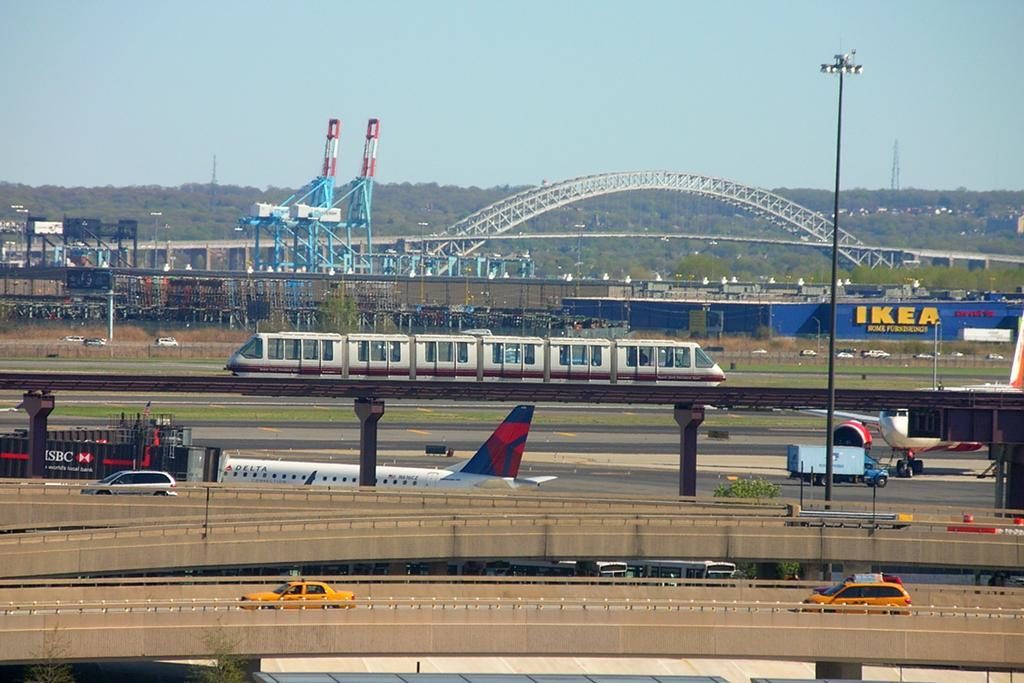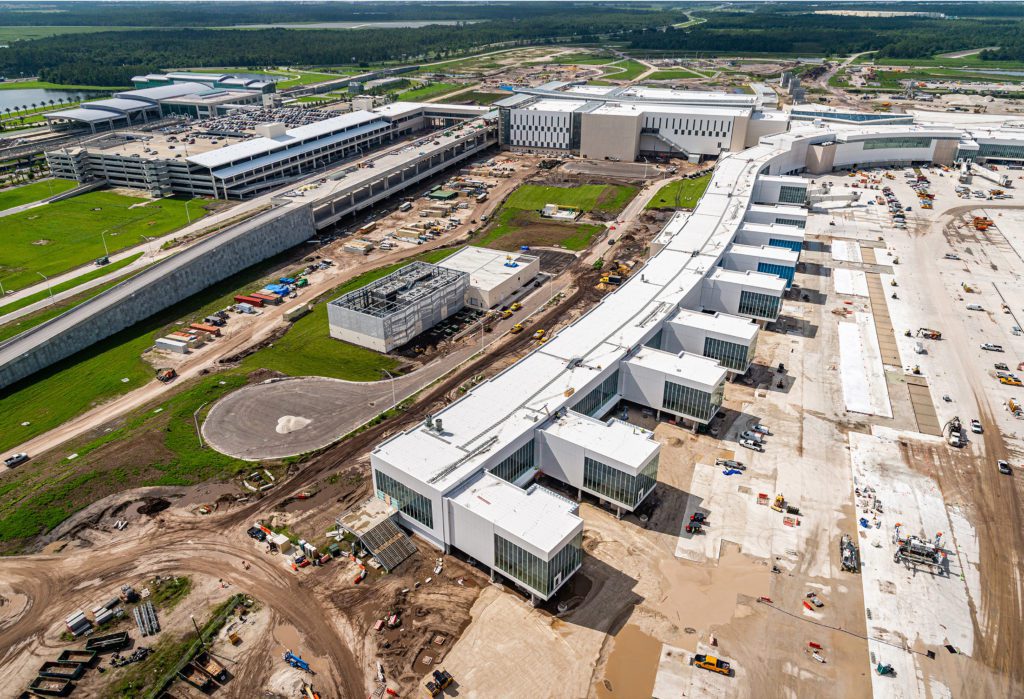Big Rail Investments at New York Airports Fall Short on Promises of Connectivity

Photo Credit: Flickr / stephen_rees
New York City's airports are about to get big transit investments. New AirTrains costing more than $4 billion are planned for LaGuardia and Newark Liberty with an aim to better connect the airports to the region's rail system. But the controversial plans raise the question: Will they live up to that promise?
The FAA signed off on LaGuardia's AirTrain at the end of July. The $2.05 billion project will connect Terminals B and C at the airport with the nearby Willets Point subway and Long Island Rail Road station. But there's a catch: Willets Point is east of the airport while Manhattan — the destination of most LaGuardia flyers — is to the west. This directional handicap earned the project the unflattering nickname of the "wrong way" AirTrain, and raised questions about its future following the resignation of champion Governor Andrew Cuomo.
The also $2.05 billion AirTrain replacement at Newark would replace the monorail — which is prone to delays and breakdowns — with a new people mover connecting the Newark Airport Station on Amtrak's Northeast Corridor with the terminal complex and under-construction Terminal 1. Although it does the same job as the existing AirTrain, the routing moves stations away from existing Terminals B and C, and instead connects them with the line via up to half-mile long pedestrian tunnels. A future Terminal 2 is planned adjacent to the proposed line. In addition, it does not eliminate the added transfer between the airport people mover and Amtrak or regional trains.

The clunky connection between the terminals and trains at Newark is widely derided by travelers. Watching a train depart the airport station while waiting for the monorail to arrive at the stop is a common complaint among passengers. And while it was never cited as an issue when United Airlines and Amtrak partnered on "air-rail" itineraries, it certainly did not facilitate connections.
To better understand the situation we need to rewind to 2004. That was when the FAA said funds raised from passenger facility charges (PFCs) — fees airports levy on travelers to fund capital projects — can only be used for rail projects that exclusively serve airports. This made it financially advantageous to build dedicated people movers, which only serve airport customers, rather than running regional transit lines through U.S. airports as is common in most of the rest of the world. Newark and New York JFK are probably the best known examples of these AirTrains, but they also feature at airports in Miami, Oakland, San Francisco, and soon Los Angeles.
In January, the FAA revised its rules saying that proceeds from PFCs can be used for sections of rail lines that pass through airports — not just exclusively serve them. But the change will take time to filter down to projects that take years to plan.

A better solution for Newark would be to build a rail line straight through the airport on the way to somewhere. This could be accomplished by rerouting the Northeast Corridor through a tunnel under the airport. And while this may cost more than the AirTran replacement — and a proposed nearly $2 billion PATH train extension to the airport station — upfront, it would provide a better level of service and maybe an impetus to restart the United-Amtrak partnership and encourage other air-rail tie ups. For example, the Washington, D.C., region's Metro serves Washington Reagan National Airport with a line that runs through the airport to on its way from downtown D.C. to points south. That connection is widely credited for Washington National having the highest percentage of traveler transit usage among U.S. airports.
At least one U.S. airport is already thinking along these lines. Orlando International Airport has built a train station as part of its new South Terminal, which will house JetBlue Airways, Emirates and others when it opens next year. Private rail operator Brightline will connect the airport station with South Florida by the end of 2022, and to Disney World and Tampa in the future. Brightline has touted airline connectivity at the Orlando Airport — for example, partnering with a carrier to sell an onward rail connection to Palm Beach — as a potential revenue opportunity in the future.

These air-rail tie ups are in place and growing in popularity in Europe. There, airlines — and governments — are increasingly leveraging these connections to achieve climate goals. Air France is in the process of streamlining the technology behind its connections with French railroad SNCF, and partner Delta Air Lines recently unveiled a new tie up with high-speed rail operator Thalys via Amsterdam. A Newark Airport central station could facilitate more of these connections in the U.S. and help airlines meet climate goals, including United's aim to go carbon neutral by 2050.
The Port Authority of New York and New Jersey already has budgeted for work to begin next year. Any new plan, like the aforementioned Newark Airport central station, would require starting over again with years of study and then securing new sources of funding. But as it stands, the proposed Newark AirTrain replacement will likely be built and New Yorkers will be consigned to subpar airport transit connections for at least another few decades.
